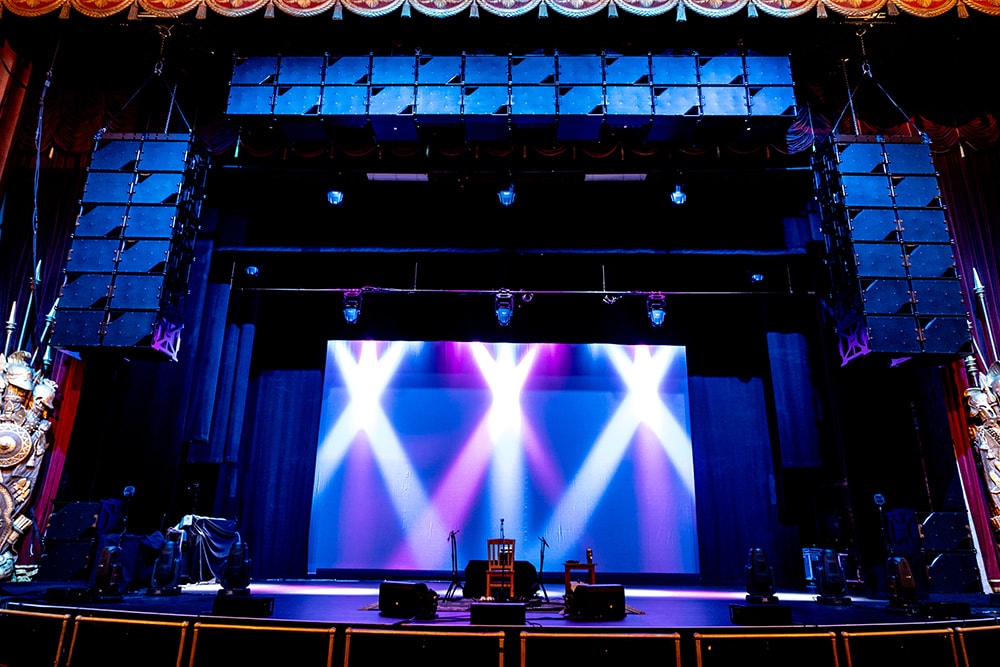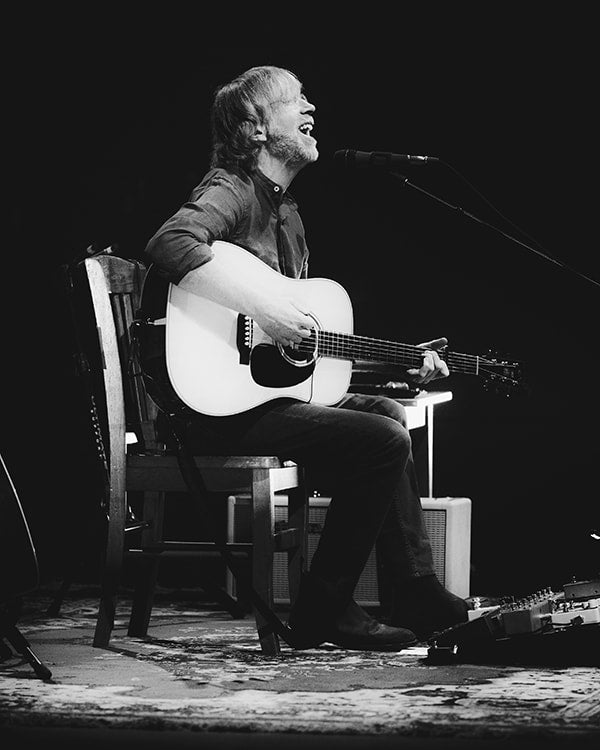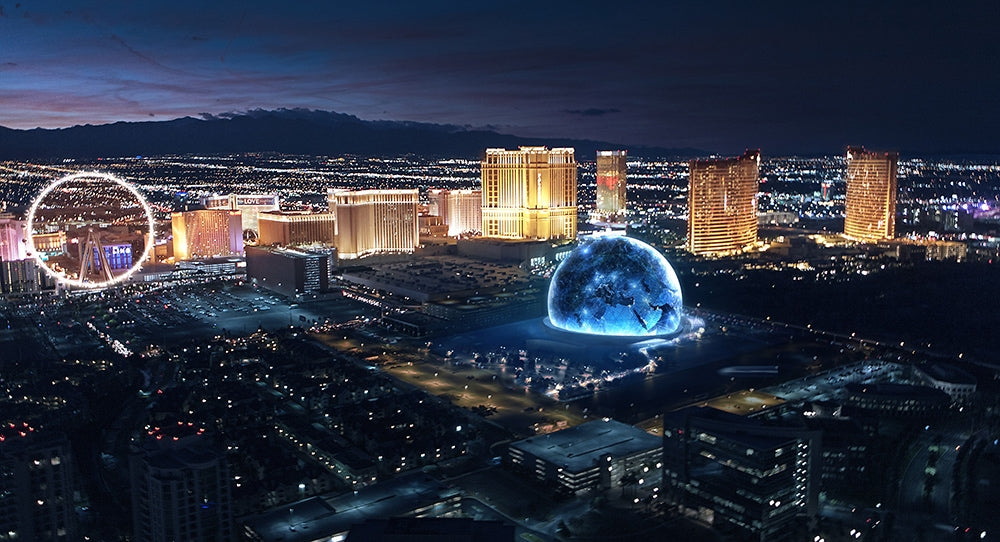I recently attended a press showing (and listening) session at the Beacon Theatre in New York of their new, recently-installed sound system, called Sphere Immersive Sound. It was touted as “the world’s most advanced concert audio system,” and utilizes 3D audio beamforming technology.
The stated purpose of this system is to guarantee that listeners in every seat in the house hears exactly the same thing no matter where they’re sitting.
Hyperbolic?
Read on…
Before I get into the stats on how this experience has been created and how well it works, here’s a bit of a back story.
When Twisted Sister was playing in the bars on Long Island and New Jersey, the pecking order of the bands was directly related to how sophisticated a band’s sound and light systems were. When you walked into a bar where we (or the Good Rats, Rat Race Choir, Zebra, Crystal Ship, White Tiger, or the Stanton Anderson Band or others) were playing, you saw huge sound systems and big light shows. This was seriously expensive gear designed to give you a concert experience in a bar.
Thinking back on it, it was insane to have to carry ever-larger lights and PAs that had to be set up and broken down every night.
The systems (remember, we were playing in bars and clubs that held anywhere from 1,000 to 5,000-plus fans) had to increase in size and cost, not to mention the trucks that we had to buy or lease and the extra crews we had to hire to carry this stuff around. If only the club owners had installed permanent light and sound systems tailored to each room, we could have saved hundreds of thousands of dollars. The club owners never thought about this stuff. Why should they? They were as shocked as we were that the bar scene grew so big so fast and no one, not the bands nor our agents ever broached the subject.
Fast forward to the present time. Most small rooms around the country have PAs and lights so new artists only have to bring their stage gear. That stops when artists get to the level of arenas, festivals, and some larger theaters. At that point, it’s every man and woman for himself!
Why do I bring this up?
Because if what I saw and heard at the Beacon becomes a standard, then, at least in theaters and arenas that are strictly designed for live performances, the cost savings to artists will be huge and maybe reflective, as a byproduct, of lower production costs and lower ticket prices…well, one can dream…

The Sphere Immersive Sound (SIS) system at the Beacon Theatre.
None of this was brought up at the listening session but was acknowledged by the creators of Sphere Immersive Sound when I asked about it.
Regarding what I heard at the morning demo, which lasted about 30 minutes, I was impressed.
Many readers of Copper, who have been in the high-end audio game for years, are aware of the many attempts to create a larger “sweet spot” to enjoy the audio systems that we have spent lots of hard-earned dollars to build. Sadly, this sweet spot, no matter how much we spend, winds up being about 30 inches wide. After you move out of that zone, many things about the sound – the imaging, the presence of a soundstage, and other aspects – start to change and the illusion of a real performance starts to collapse. Ironic, ain’t it. The more you spend, the greater the illusion, until you go off-axis. The sweet spot should get wider, the more you spend!
The result of this quandary has been the attempt to digitally create, through multichannel surround speakers and DSP (digital signal processing), a more immersive sound experience. Oh no! Not digital. That’s cheating. That’s fake! DSP (digital signal processing) is a dirty reference in our purist high-end world.
Actually, for the record, I have heard some amazing DSP-based playback systems and given the right sources, the experience is fantastic. I must add, however, that I remain a committed 2-channel audiophile at the moment in my listening room
I bring this up because, in a live concert experience, where you sit determines, for the most part, how much you enjoyed the show.
The closer to the mixing console the better the sound, as that is where the sound mixer sits.
Pink Floyd has always led the way when it comes to immersive audio. Even back in the late 1960s in the Fillmore days, they brought a quad sound system.
Floyd knew what they were after. Their albums, especially The Dark Side of the Moon, have always been audiophile favorites.
When they performed The Wall in 1980, they outfitted the Nassau Coliseum with speakers all around the floor mounted under seats.
“Stanley Screamers,” I was told by the promoter. I was there for two of the shows and it was an awesome sonic experience. [According to the Lansing Heritage website, Stanley Screamers were made by Stanal Sound from the late 1970s through early 1980s, and marketed by Altec Lansing – Ed.]
Those who have seen the Beatles Love show by Cirque du Soleil in Las Vegas also know what incredible surround sound can do. In this show, there are speakers behind every seat. It has consistently led to raves about how the music has never sounded better. This has to do with a special mix that allows all the channels of audio to provide enveloping multichannel sound.
This is where this new SIS (Sphere Immersive Sound) technology comes into play. (Click here for an Instagram video about SIS.)
Thanks to DSP, the fixed-array sound system does (or tries to do) what multiple speakers do without the need for actual physical surround (rear and height-channel) speakers. It’s all done through DSP with state-of-the-art loudspeakers and amplifiers. The SIS system uses five speaker arrays with built-in subwoofers, arranged in a left-center-right configuration. Using beamforming, the arrays are tailored to aim their sound to the four sections of the Beacon Theatre – the orchestra, loge, lower balcony and upper balcony.
Here’s more information provided by MSG Entertainment: instead of an ever-expanding wave as produced by conventional PA systems, the SIS process causes the sound to travel as thousands of beams – the “beamforming” part of the technology. (More on this below.) This enables audio to be directed at the listener so that it sounds close, even though the source is far away.
I only heard a taped demo, as I couldn’t make the show in the evening. Trey Anastasio of Phish was going to do an acoustic set to debut the system that night. (Copper’s Tom Methans was able to go, and has a report in this issue.)

Trey Anastasio of Phish at the Beacon Theatre, August 19, 2022.
The sound pressure level, as played back while I was there, was impressive. Several blues tracks were also played. There were a number of other journalists there, and we were encouraged to walk around the theater as the demo sound was playing. I walked around, from one side to the other, from front to back, and basically heard the same mix, which did envelop me.
I must note, however that this was in an empty theater, so I don’t know how the system, or equalization, compensates once people fill in the seats. I also did not walk up to the balcony.
The SIS system is now permanently installed in the Beacon Theatre. Another SIS system is being installed at the MSG Sphere in Las Vegas at the Venetian. It will be a 20,000-seat venue when it’s finished in 2023.
The Madison Square Garden Entertainment Company has a lot invested in the Beacon and the upcoming MSG Sphere. The size and complexity of the latter is huge and I’m sure the cost of development (the Sphere will cost $1.8 billion) is commensurate with the size and scope of this creation.

A rendering of the MSG Sphere in Las Vegas, to be completed in 2023.
What I can say is, after my short exposure, is that the system appears to do what is claimed, but when I hear it in real-world use, I’ll be able to give a more educated opinion. Needless to say, the idea of a properly set up sound system in any given room is always a plus, and if this new design performs as advertised, live sound has truly entered the 21st century.
Editor’s Notes: Beamforming works by controlling the phase, relative amplitude, and timing of different [sources] to create patterns of constructive and destructive interference (from Wikipedia). Put another way, beamforming relies on different speakers responding to the input signal in different ways. The different speaker settings allow the system to control the size, shape and direction of the acoustic wave (from MathWorks).
The SIS system is modular in design. The Beacon Theatre system uses 52 total speaker modules, both flown and ground-stacked.
All images and video links courtesy of MSG Entertainment.


